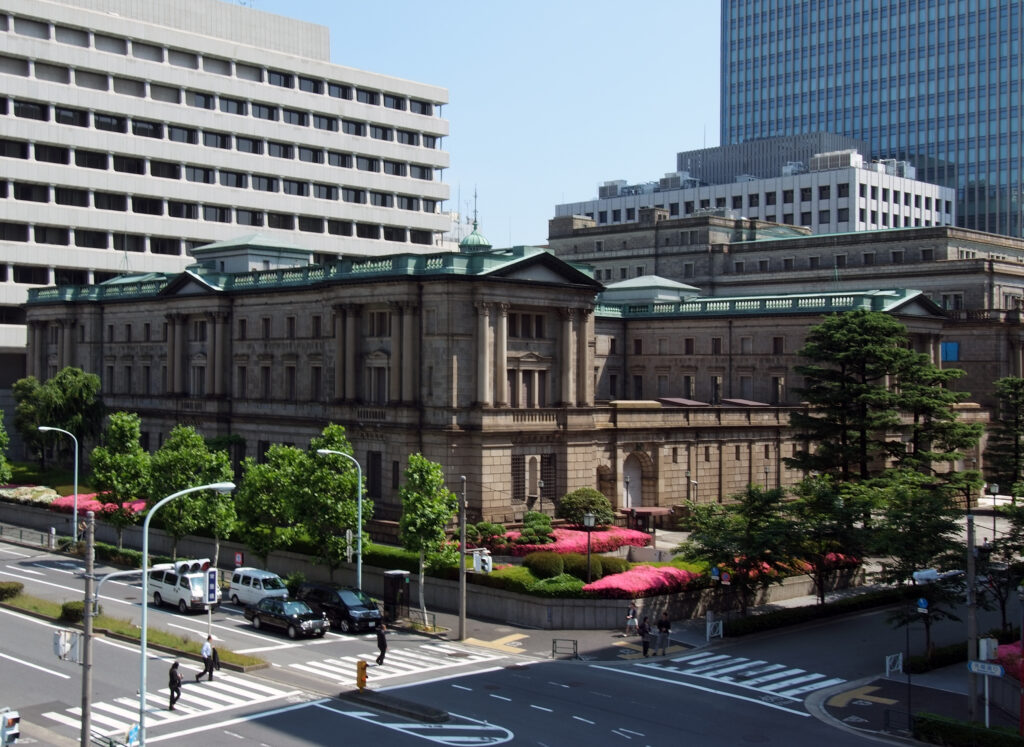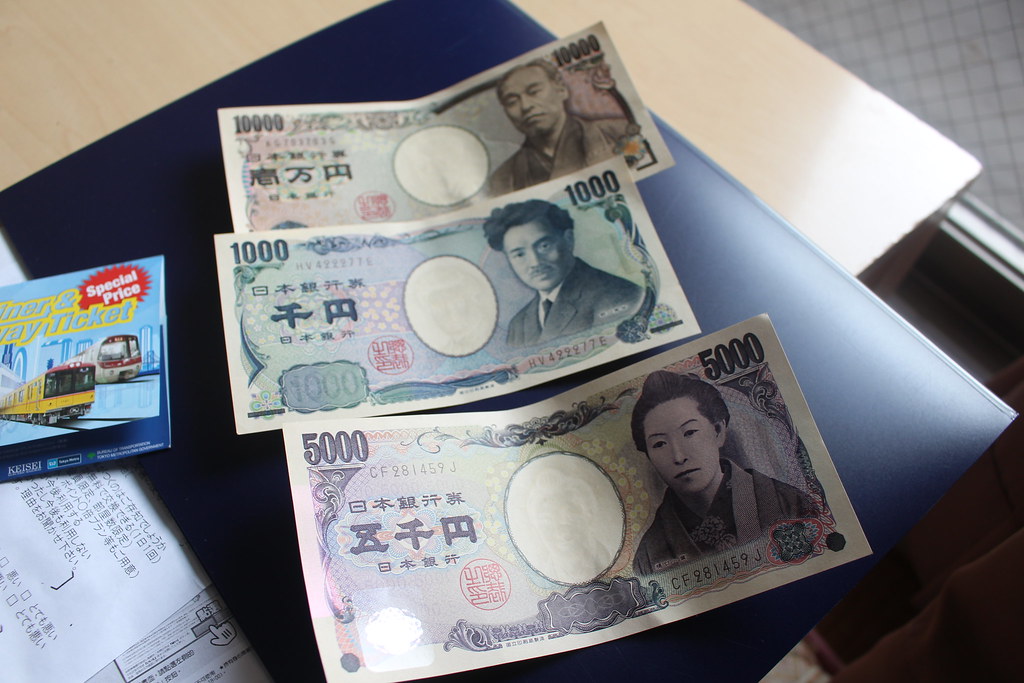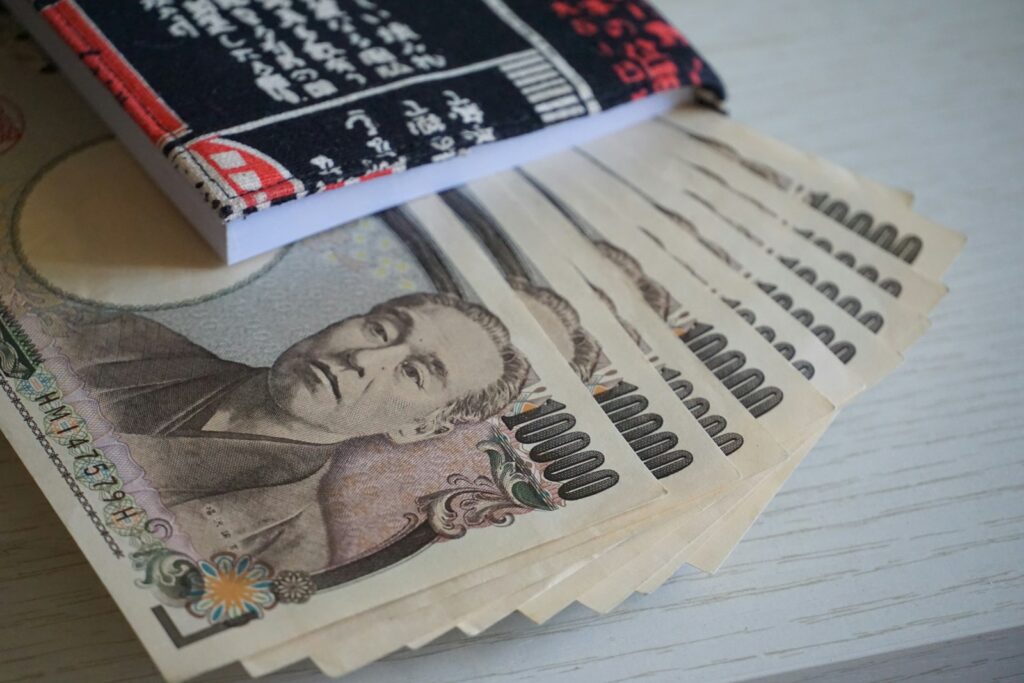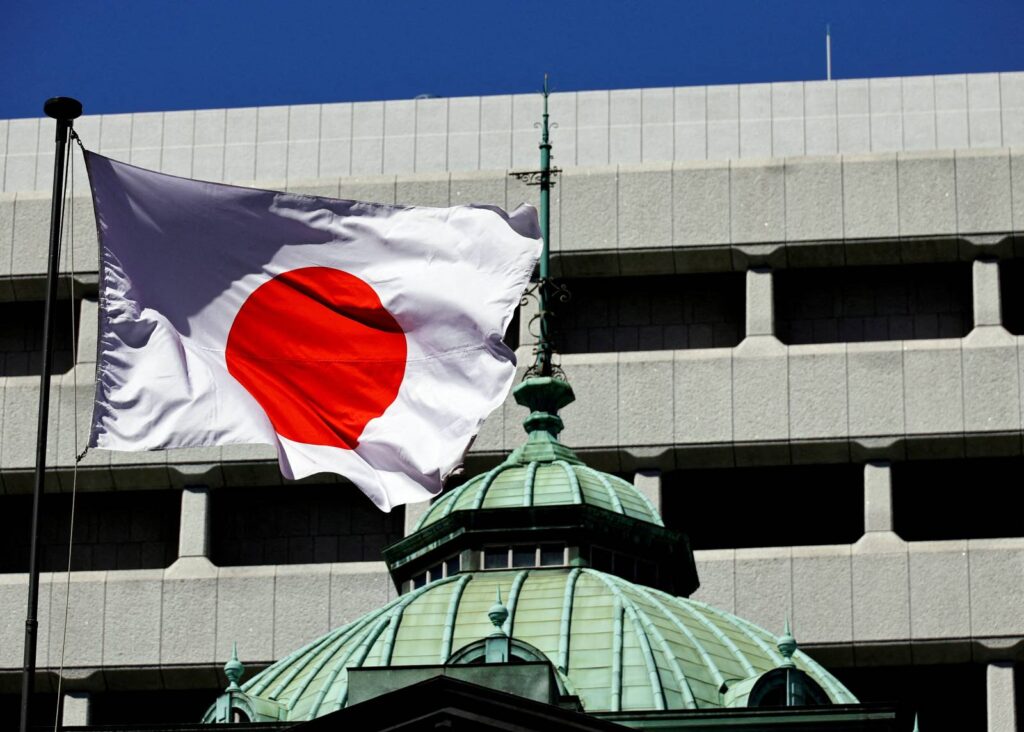For the first time in nearly two decades, the Bank of Japan has raised its interest rates to levels not seen since the 2008 financial crisis. This marks a significant shift in the country’s approach to combating inflation, steadily outpacing its long-standing 2% target. The decision to push the short-term rate from 0.25% to 0.5% highlights growing confidence in Japan’s wage growth and its ability to sustain higher consumer prices. With markets watching closely, this move doesn’t just impact Japan’s economy—it sends ripples through global markets, from currencies to bond yields.
What Led to the Bank of Japan’s Decision?
The Bank of Japan’s recent decision to raise interest rates, marking its most significant monetary shift in decades, stems from complex interwoven factors. From battling deflation for years to grappling with inflationary pressures and foreseeing increased wages, the ripple effects of these elements have shaped its latest move. Let’s break down the key factors.

Decades of Deflation and Recovery Efforts
Japan’s economy has grappled with a persistent challenge for over thirty years: deflation. Prices were stagnant, wage growth was limited, and businesses faced sluggish demand. This prolonged period, often called Japan’s “Lost Decades,” forced its policymakers to resort to unconventional measures like negative interest rates and quantitative easing to revive economic activity.
These strategies, while groundbreaking, had mixed results. Negative rates helped stimulate lending and borrowing, but growth remained sluggish due to tepid consumer demand. Efforts such as Abenomics—a three-pronged policy approach introduced by former Prime Minister Shinzo Abe—sought to stimulate the economy through monetary expansion, fiscal stimulus, and structural reforms. For a deeper look into these recovery efforts, this World Economic Forum article provides insights into Japan’s use of negative interest rates to tackle deflation.
The situation shifted recently as global economic dynamics and domestic reforms gained traction. Japan’s policymakers have gradually seen encouraging signs of recovery, leading to more traditional monetary policy adjustments.
Rising Inflation Pressures
Over the last year, Japan has experienced a sharp rise in its core inflation, with consumer prices hitting a 16-month high of 3% in December 2024. While this figure may not alarm some nations, it’s significant for Japan, where deflation or low inflation was the norm for decades. So, what’s fueling the surge?
- Higher Import Costs: A weaker yen has made imports more expensive, especially energy and food.
- Rising Food Prices: Global supply chain disruptions have caused a spike in staple goods prices.
- Labor Market Pressures: A shortage of workers has translated into rising wages for workers across industries.
This surge in inflation has presented an interesting challenge for the Bank of Japan. While rising prices can hurt households’ purchasing power, they show that the economy is breaking free from deflationary trends. Learn more about Japan’s inflationary trend in this Reuters report.
Projected Wage Increases
Perhaps one of the strongest drivers behind the Bank of Japan’s interest rate hike is the anticipated wage growth. Low wages kept consumer spending stagnant for years, as many workers lacked the disposable income to spend on non-essentials. Now, that trend is shifting.
Recent wage negotiations have revealed that major Japanese companies are planning significant pay increases, reflecting a tightening labor market. Japan’s largest trade union group, Rengo, aims for wage hikes of at least 5% this year, which builds upon the strong pay increases businesses agreed to in 2024. This move is expected to create a “virtuous cycle,” where higher wages lead to increased spending, which then bolsters overall economic growth. For more on these projections, check out this Reuters article.
Increased wages also provide the foundation for sustained inflation above the Bank of Japan’s 2% target. With companies more willing to adjust pay structures, the central bank is betting on a long-term upward trajectory in both spending and economic output. It’s a calculated gamble, but one that the BOJ sees as essential for Japan’s future economic stability.
The Details of the BOJ Rate Hike
The Bank of Japan’s recent rate hike has been closely watched, signaling a shift in the country’s monetary policy. This decision reflects growing confidence in the economy, including its ability to sustain higher inflation rates and wage growth. Here’s what happened and why it matters.
From 0.25% to 0.50%: An Incremental Approach
The Bank of Japan raised its short-term policy rate from 0.25% to 0.50%, increasing 25 basis points. While it may seem modest compared to hikes by central banks in the US or Europe, this is a significant step for Japan. The move puts the nation’s interest rates at a 17-year high, not seen before the 2008 financial crisis.
So why the cautious approach? Japan has been known for its ultra-low interest rates, intended to combat decades of deflation. A sudden, sharp increase could disrupt economic stability or spook financial markets. The incremental adjustment signals confidence that Japan’s economy can now handle slightly higher borrowing costs without stalling growth. For more insights, Nikkei Asia explores what the 0.50% increase means for Japan’s economy.

A Dissenting Vote and Its Implications
While the decision to raise rates was widely expected, it wasn’t unanimous. Out of the nine-member policy board, Toyoaki Nakamura cast the sole dissenting vote. What does this dissent mean for the broader decision-making?
A dissenting vote often reflects differing perspectives on economic conditions. Nakamura’s opposition likely signals concerns about raising rates too quickly, potentially straining households or small businesses. The disagreement highlights the balancing act the BOJ must perform—tightening monetary policy without derailing recovery. You can read more about the dissent in this Reuters analysis on the BOJ’s rate decision.
It’s worth noting that dissent, while rare in Japan’s central bank, isn’t unusual in global central banking. It shows a healthy debate within the BOJ and could shape the pace of future hikes.
Inflation Targets and Economic Projections
At the heart of this rate hike are inflation dynamics. For years, Japan struggled to reach its 2% inflation target, an issue tied to its deflationary past. However, things have changed. Core inflation reached 3.0% in December 2024—the highest in over a year—driven by rising food and energy prices and higher wages.
The BOJ now projects inflation to hover above 2% until at least 2026, with core inflation expected to peak at 2.4% in the fiscal year ending in March 2025. If these projections hold, they pave the way for additional rate increases. For a deeper dive, the BOJ’s official Outlook for Economic Activity and Prices offers more details.
Crucially, rising wages are a big part of the BOJ’s confidence. Wage growth is beginning to offset higher living costs, creating a reinforcing cycle of spending and growth. With labor shortages persisting and major companies committing to further pay hikes, Japan’s economic outlook seems brighter. But risks remain. The weak yen and uncertainties in global markets could complicate progress, keeping the BOJ cautious.
This rate hike isn’t just about monetary policy; it’s a signal that Japan believes its economy is on a more sustainable path. Whether that belief holds will depend on whether rising prices and wages can coexist without cooling spending or triggering economic shocks.
Market Reactions to the Rate Hike
The Bank of Japan’s (BOJ) decision to raise interest rates didn’t just make waves domestically—it sent ripples through global financial markets. Investors, analysts, and policymakers closely monitored how this move would influence everything from currency dynamics to equity performance. Let’s dive into the immediate market reactions across different sectors.
Impact on the Yen-Dollar Exchange Rate
Following the announcement, the yen rallied against the US dollar, reflecting renewed strength after years of loose monetary policy. Initially, the yen strengthened by approximately 0.5%, with the exchange rate moving to 155.32 per dollar—a dramatic shift from previous lows. This rise was fueled by optimism surrounding Japan’s economic stability and the expectation of further monetary tightening in the near future.
However, the exuberance was short-lived. As markets digested the implications of the rate hike, the yen’s movement steadied, mirroring cautious optimism rather than unchecked enthusiasm. It’s common for currency markets to overreact initially, only to recalibrate once the dust settles. For more insights on the yen-dollar dynamics, this Reuters article provides a detailed breakdown.
It’s interesting to note that because the yen had been undervalued for much of the past year, this newfound strength could help mitigate Japan’s inflated import costs, particularly in energy and food sectors. Yet, some analysts warn that an overly strong yen might dampen export competitiveness, a key pillar of Japan’s economy.

Bond Market and Nikkei 225 Performance
Japanese Government Bonds (JGBs) saw significant turbulence post-announcement. The two-year bond yield spiked to a 15-year high of 0.705%, signaling market anticipation that the BOJ’s rate hikes may continue. This response reflects rising investor expectations for tighter monetary policy, which typically drives yields higher as borrowing costs increase.
Meanwhile, the Nikkei 225 index initially reacted with mild optimism. The market opened on a bullish note, with gains of around 0.6% during the morning trading session. However, by the afternoon, enthusiasm had faded, and the index only held onto a modest increase of 0.26%. The tempered reaction underscores a balancing act: while higher rates indicate confidence in Japan’s recovery, they also reduce liquidity, potentially tempering future equity market gains. US News has an in-depth look at the Nikkei’s responses.
Notably, some sectors, such as technology and export-driven industries, showed greater sensitivity to the fluctuating yen, reflecting both opportunity and risk in the current economic landscape. As borrowing costs rise, companies reliant on debt may face additional strains—a dynamic likely to shape the Nikkei’s performance in the coming months.

Investor Sentiments and Global Observations
Investor sentiment appeared mixed, both within Japan and globally. On one hand, many saw the rate hike as a long-overdue step in normalizing Japan’s monetary policy, moving away from its decades-long experiment with ultra-low rates and deflationary stagnation. On the other hand, the move stoked fears of overcorrection—could tightening happen too quickly and derail Japan’s fledgling recovery?
Globally, financial markets took a keen interest in the BOJ’s policy shift, with central banks from Europe to the US drawing parallels to Japan’s experience. The BOJ’s decision to remain data-driven, without committing to a preset rate trajectory, is being watched as a potential model for other economies grappling with inflation. Bloomberg highlights key investor reactions to the rate hike in this update.
It’s also interesting to see how Japan’s strategy contrasts with nations like the US, where aggressive rate hikes were implemented rapidly to counter inflation. By opting for a gradual approach, Japan is betting on a more controlled transition, reducing risks of shocks to households and businesses.
Ultimately, the market’s response illustrates the significance of this rate hike far beyond Japan’s borders. The BOJ’s cautious optimism resonates as both a signal of recovery and a warning of lingering uncertainties. Investors and policymakers alike will be watching upcoming economic data to gauge whether Japan’s bold gamble pays off.
What This Decision Means for Japan’s Economy
The Bank of Japan’s (BOJ) recent interest rate hike has sparked significant discussions about its implications for the Japanese economy. As the central bank shifts its strategies to tackle inflation and revive sustainable growth, this decision represents more than just a monetary policy adjustment—it’s a pivotal moment for economic transformation. Let’s look at what this means.
Addressing Higher Living Costs
Japan’s citizens have been grappling with a rise in everyday living costs, from food and energy to transportation. Core inflation recently hit a 16-month high of 3.0%, driven by the weaker yen and global supply chain issues. This interest rate hike is the BOJ’s response to inflation that’s eating into household budgets.
Higher interest rates are designed to cool inflation over time by increasing borrowing costs for businesses and consumers. If companies have less access to cheap credit, they may adjust their pricing strategies, slowing down the pace of rising costs. It’s like putting a brake on an overheated engine—the goal is not to stop it entirely but to ensure it moves at a sustainable pace.
However, this shift won’t immediately relieve everyone. From mortgage payments to car loans, the rate hike could increase financial strain in the short term. Still, the BOJ is betting that cooling inflation can stabilize the cost of living in the long run. To learn more about the inflationary trend, you can check BBC’s detailed coverage on Japan’s economic changes.
Balancing Growth and Inflation
Economic growth and inflation often need to walk a tightrope together. For years, Japan struggled with deflation—declining prices that discouraged spending and investments. This new chapter is the opposite problem: inflation is running hot, which typically signals economic recovery. But the challenge lies in managing it without putting brakes on growth.
The BOJ’s decision to raise interest rates is a step toward normalizing monetary policy. However, the central bank must act cautiously. Hiking rates too much risks slowing spending and investments, potentially stalling growth again—something Japan wants to avoid after its prolonged economic stagnation. It’s like calibrating a recipe: too much of one ingredient could spoil the whole dish.
This balance will require ongoing adjustments. The BOJ has stated it will assess economic indicators on a meeting-to-meeting basis rather than following a fixed roadmap. This pragmatic approach, highlighted in Fortune’s insightful analysis, aims to prevent both excessive inflation and economic slowdown.
Future Implications for Wages and Consumption
One of the most critical factors in this decision is its potential to create a “virtuous economic cycle.” Higher wages, in theory, could boost consumer spending, which then drives business revenues and creates more job opportunities. Recent wage negotiations in Japan suggest businesses are ready to offer meaningful pay hikes amidst a tightening labor market.
If wage growth continues, it could offset the sting of inflation by giving workers more purchasing power. Imagine more families dining out, buying new technology, or spending on vacations. These activities fuel consumption, which accounts for a significant chunk of Japan’s economy. For example, the BOJ has projected core inflation to stabilize around 2% by 2026, partly due to sustained wage growth.
Still, encouraging consumption isn’t just about worker paychecks—it also requires consumer confidence. People need to believe that their financial situations are improving. This is where wage growth matters most: it signals a healthier economy where people feel secure enough to spend. AP News touches on how these factors intertwine in their piece about wages and inflation in Japan.
The move by the BOJ isn’t just about numbers in an economic report. It’s about creating conditions where both businesses and households can thrive. Whether this vision materializes depends on how well Japan navigates these interconnected challenges in the months to come.
Key Challenges Facing the Bank of Japan
The Bank of Japan (BOJ) is navigating a financial environment filled with hurdles as it moves to reshape its monetary policy. While its recent interest rate hikes aim to signal confidence in the economy, the BOJ faces complex challenges that could determine the success or setbacks of its strategy. Let’s dig into three key obstacles.
Global Economic Influences: Analyze how the US Federal Reserve’s policies and global trade affect the BOJ’s strategy.
The BOJ’s policies don’t exist in a vacuum—they’re deeply influenced by global economic trends, especially those led by the U.S. Federal Reserve (Fed) and international trade dynamics. When the Fed raises rates aggressively, as it has recently, the dollar strengthens against other currencies, including the yen. This creates a tough scenario for Japan, as a weaker yen increases import costs, particularly for essentials like energy and food. While this fuels inflation in Japan, it also pressures the BOJ to act cautiously to avoid destabilizing its export-driven economy.
Trade uncertainties further complicate the BOJ’s strategy. For instance, disruptions in global supply chains or rising protectionism could make balancing inflation and growth even trickier. With less control over external shocks yet significant reliance on international trade, the BOJ must juggle the domestic consequences of global volatility. For more insights, you can explore this Wall Street Journal article, which highlights the BOJ’s recent decisions against the backdrop of global economic trends.
Sustaining Inflation Above 2%: Explain why maintaining inflation above the 2% target could prove difficult.
Hitting the 2% inflation target was a struggle for Japan for decades, but sustaining it above this threshold presents a new layer of difficulty. A good portion of Japan’s current price increases is driven by cost-push factors, such as higher import prices due to the yen’s weakness. These are not the kinds of long-term, demand-driven price pressures that central banks generally aim for.
A sustainable inflation rate relies heavily on wage growth and consistent consumer spending. While recent wage negotiations have led to some increases, maintaining such momentum amidst rising costs of living is no small feat. Consumers may hold back on discretionary spending if wages don’t rise fast enough to keep up with inflation, slowing the economy and dragging inflation rates back down.
Adding to this is the uncertain impact of global economic headwinds. Sluggish global growth or a sharp drop in energy prices could quickly cool inflation, pulling it below target again. The BOJ’s gamble is to ensure domestic dynamics—primarily wage growth—become the driving force behind inflation. Interested in how global inflation interacts with Japan’s policy decisions? Take a look at this detailed analysis from the World Economic Forum.
Potential Risks of Continued Rate Hikes: Discuss the economic risks associated with increasing interest rates too quickly or too high.
The BOJ’s gradual rate increases are meant to send a signal of stability, but even small hikes bring risks. For one, higher interest rates increase borrowing costs for both businesses and households. The adjustment could dampen corporate investments and consumer spending more than expected in an economy that has long been accustomed to ultra-low, or even negative, rates.
Additionally, Japan’s debt-loaded financial system is especially sensitive to rate hikes. Rising rates could increase the government’s debt servicing costs significantly, shrinking fiscal flexibility. Meanwhile, small businesses, which make up a substantial part of Japan’s economy, might struggle with higher borrowing costs, potentially leading to layoffs or reduced growth.
Finally, raising rates too quickly or too far could trigger volatility in financial markets, undermining the BOJ’s goal of fostering stability. Securing a balance between tackling inflation and encouraging growth is like walking a tightrope—it requires precision at every step. To further understand these risks, this CFI blog post offers an excellent summary of how the BOJ’s decisions ripple across the economic landscape.
The Bank of Japan’s path forward is laden with challenges, each interconnected and requiring careful navigation. Whether addressing external pressures, ensuring inflation sustainability, or mitigating the risks of rate hikes, its decisions now are shaping not only Japan’s present but its economic future.

